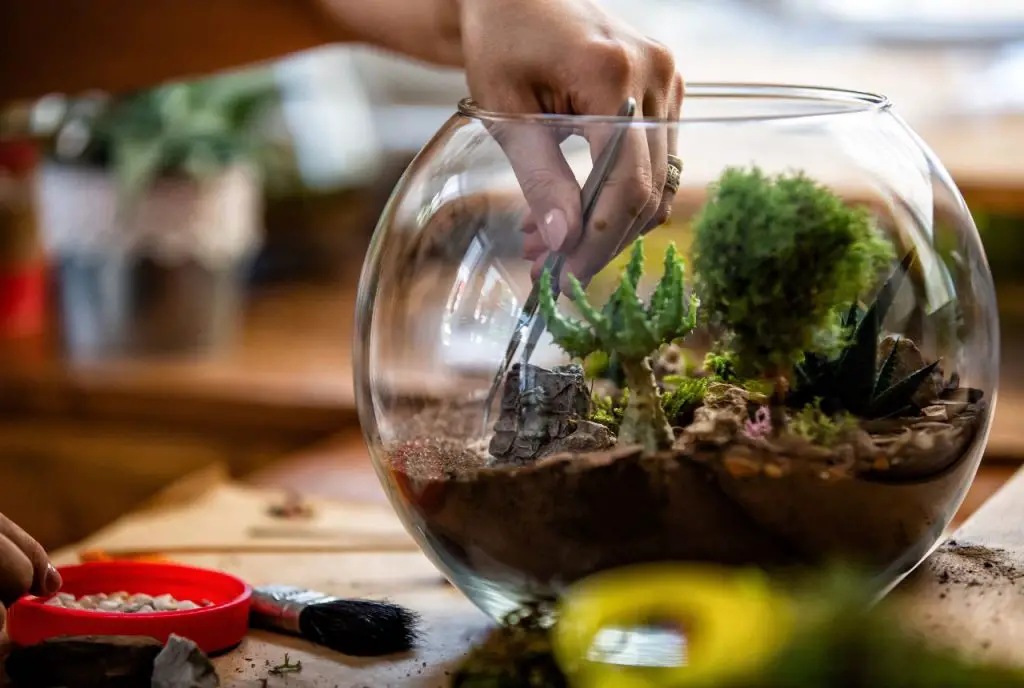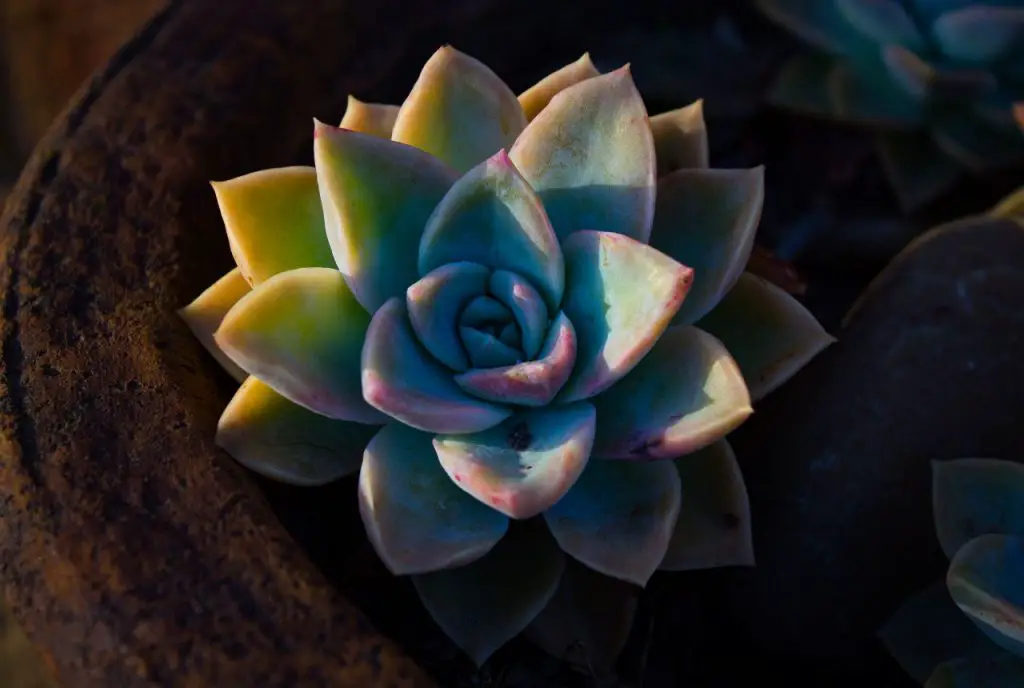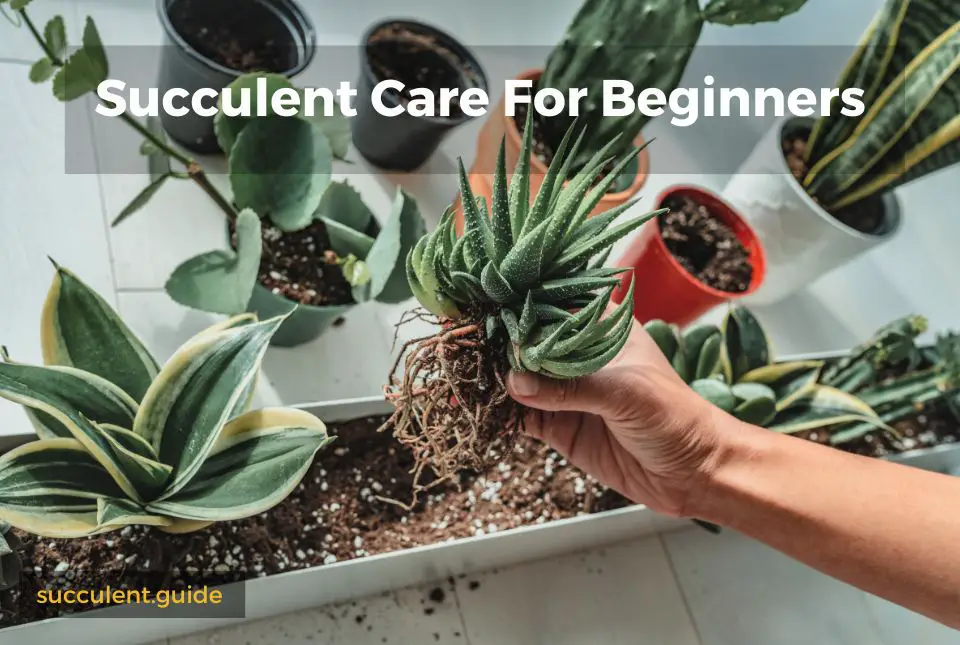Succulents have gained immense popularity in recent years, with their unique shapes, colors and low maintenance making them a favorite for indoor and outdoor gardening enthusiasts.
However, taking care of these plants requires specific knowledge and techniques. As a beginner, it can be overwhelming to know where to start and how to ensure that these plants thrive.
In this article, we will explore the basics of succulent care for beginners, including selecting the right pot, appropriate soil requirements, watering and sunlight needs, and handling common issues like pests and diseases. With these simple tips, novice gardeners can kickstart their succulent journey and create a beautiful and healthy collection.
How to Care for Succulents: A Beginner’s Guide
Succulents require well-draining soil, bright light, and infrequent but deep watering. It is important to match the needs of the specific type of succulent, as some may require different amounts of water or sunlight.

Step 1: Choose the Right Soil
The first step in caring for succulents is selecting the right soil. Succulents prefer well-draining soil that allows water to drain easily. The soil should not retain too much water as it can cause root rot and other issues that can harm the health of the plant. A blend of potting soil, sand, and perlite is a great option for succulents. The sand and perlite help to improve drainage, and the potting soil provides the nutrients the plant needs to thrive.
Step 2: Water Correctly and Fertilize Sparingly
Watering is a crucial part of succulent care. These plants are adapted to harsh environments and can survive drought conditions. Overwatering can cause root rot, and underwatering can lead to dehydration and stunted growth. The key is to find the right balance.
A good rule of thumb is to water succulents once a week during the growing season (spring and summer) and reduce watering in winter. The frequency of watering can vary depending on factors such as humidity, temperature, and the type of succulent. It is important to note that it is better to underwater than to overwater, as succulents can bounce back from dehydration but not from root rot.
Succulents do not require much fertilizer, as they get most of their nutrients from the soil. However, a light feeding during the growing season can help them thrive. Use a balanced fertilizer that is diluted to half strength and apply once a month.
Step 3: Use the Right Pot
Succulents are often grown in small pots, but it is important to make sure the pot is the right size. A pot that is too small can cause the roots to become crowded and lead to root rot. A pot that is too large can hold excess water and cause issues such as mold. The pot should have drainage holes to allow water to flow through easily.
Step 4: Provide Adequate Light
Most succulents require plenty of sunlight to thrive. They are native to arid regions and are accustomed to bright, direct light. However, direct sunlight can scorch the leaves of some succulents, so it is essential to find the right balance. Place your succulents in a bright spot, such as a south-facing window, and watch for signs of sunburn. If the leaves begin to turn brown, move the plant to a spot with less direct sunlight.

Step 5: Temperature and Humidity
Succulents prefer warm temperatures and low humidity. Temperatures between 60 and 85 degrees are ideal for most succulents. However, some can tolerate cooler temperatures, but they should not be exposed to frost.
In terms of humidity, succulents prefer dry air. They are adapted to arid conditions and can suffer in high humidity. If you live in a humid climate, you can place a small fan near your succulents to improve air circulation and reduce humidity.
Step 6: Pests Control
Pests control is important when caring for succulents because pests can cause damage, spread diseases, and even kill the plants if left untreated.
Some pests such as spider mites, mealybugs, and aphids, feed on the sap of the plant which can weaken the succulent over time. Others, like scales and thrips, can cause visible damage to the leaves and stems. Pests can also carry diseases that can infect the succulent, leading to discoloration, stunted growth.
In addition to the physical damage, pests can quickly multiply and spread to other plants, especially if they are kept close together.
For small infestations, you can remove the pests by hand or with a soft brush. Make sure to inspect both sides of the leaves and the stems.
In addition, Neem oil is a natural pesticide that is effective against a wide range of pests. Dilute the neem oil with water according to the instructions on the label and spray it on the affected areas.
If the infestation is severe, you may need to use systemic insecticides that are absorbed by the plant’s roots and circulate throughout the plant. However, these should be used with caution and according to the instructions on the label.
Remember to keep your succulents healthy by providing them with the amount of water and sunlight, as healthy plants are less susceptible to pests.
Step 7: Prune and Clean
Succulents do not require much pruning, but it is essential to remove dead leaves and flowers regularly. Dead leaves can attract pests and diseases, and removing them can prevent these issues from spreading to healthy leaves. Removing spent flowers can also help redirect the plant’s energy to other growth areas.
Final Thoughts
With these tips, you can start your succulent collection and keep them healthy and happy for years to come. Succulents are a joy to care for, and with their unique shapes, sizes, and colors, they are the perfect addition to any indoor or outdoor space. Remember to choose the right soil, water correctly, use the right pot, provide adequate light, regulate temperature and humidity, fertilize sparingly, and prune and clean regularly to keep your succulents thriving.

